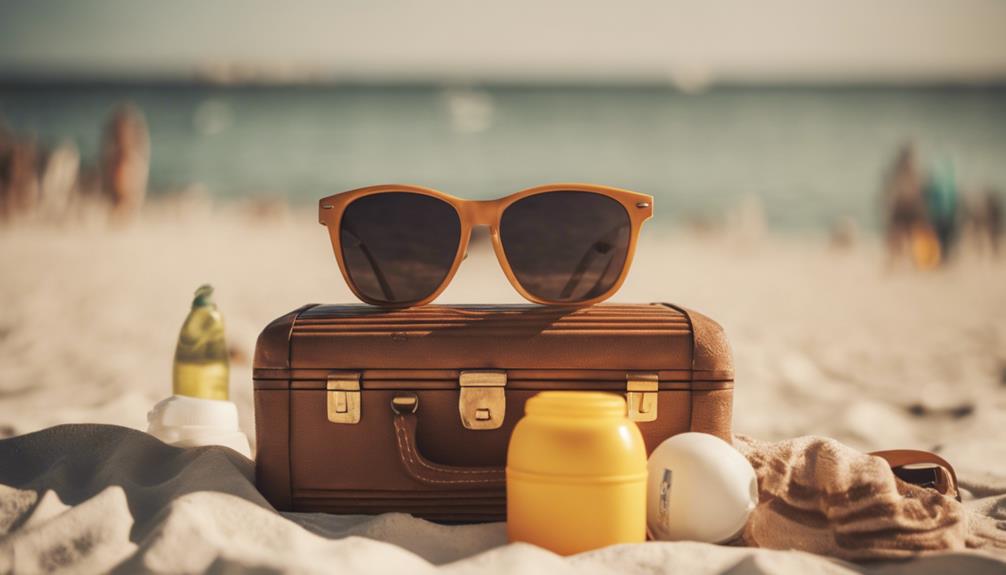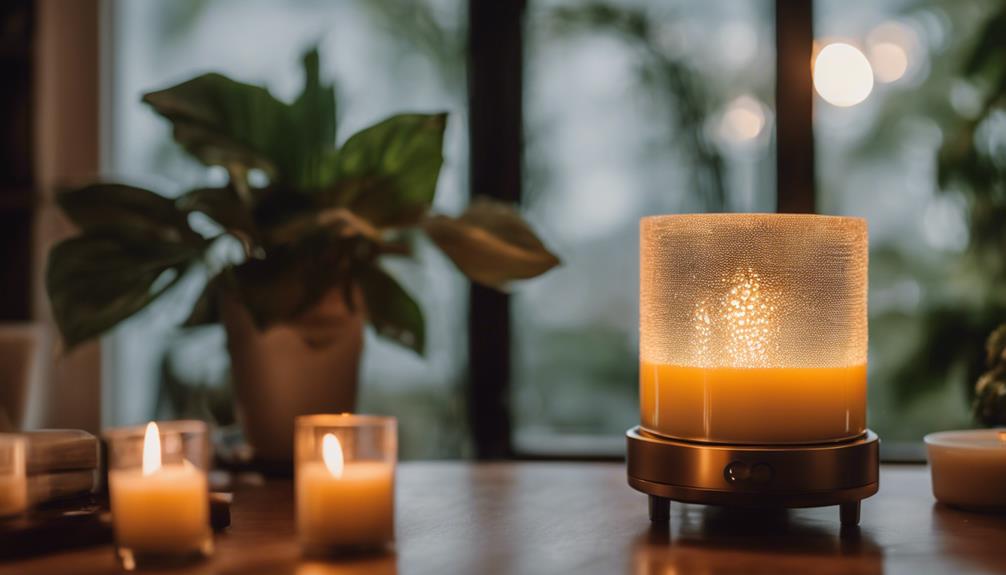Revealing your perfect glow is as easy as pie! First, know your skin type—fair folks should start slow with short sessions, while those with darker skin can go longer. Keep it safe by limiting your visits based on your type: fair skin, just one or two times a week, while medium can handle two to three. Don't forget to hydrate and moisturize before and after tanning, and always wear those stylish protective eyewear! Rotate your position for an even tan, and remember, glowing takes patience. Stick around, and you'll uncover even more fab tips to achieve that sun-kissed look you crave!
Key Takeaways
- Determine your skin type using the Fitzpatrick Scale to tailor your tanning sessions for optimal results.
- Start with short sessions and gradually increase duration to build a safe, even tan without burns.
- Stay hydrated and moisturize your skin before and after tanning to maintain its health and glow.
- Rotate positions during tanning sessions to achieve an even tan and minimize the risk of tan lines.
Understanding Your Skin Type
To achieve a beautiful tan, it's crucial to understand your skin type and how it affects your tanning sessions. You can use the Fitzpatrick Scale to figure out where you fall.
If you've got fair skin, start with short sessions, or you might end up looking like a lobster! Darker skin types can handle longer sessions, but safety's still key.
Remember, it's all about building that base tan gradually – 3 to 5 sessions usually show some color change.
Before you hit the tanning salon, make sure to hydrate, exfoliate, and ditch the makeup. Protective eyewear is a must, too!
Knowing your skin type sets the stage for a glowing, healthy tan, so let's get that perfect glow safely!
Managing Tanning Sessions

Knowing your skin type helps you plan your tanning sessions effectively, ensuring you maximize results while prioritizing skin health.
Start with shorter sessions, gradually increasing exposure, and remember to limit yourself to one session per day.
Here's a quick guide to how often you should tan based on your skin type:
- Fair: 1-2 times weekly
- Medium: 2-3 times weekly
Keep an eye on how your skin reacts, and don't hesitate to ask experts for personalized advice.
It's all about finding that perfect glow without turning into a lobster!
Practicing Responsible Tanning

How can you enjoy the benefits of tanning while minimizing skin damage?
First, start slow! Gradually build up your tanning sessions, and never go for more than one session a day.
You'll want to hydrate your skin like a thirsty plant—apply moisturizer and drink plenty of water. Trust me, your skin will thank you!
Avoid those tempting multiple sessions in one day; it's a one-way ticket to sunburn city! Instead, aim for a healthy glow without risking your skin health.
Remember, a little preparation goes a long way. Keep an eye on how your skin reacts, and don't hesitate to ask tanning experts for their best advice.
With these tips, you'll be on your way to a gorgeous tan and happy skin!
Techniques for Even Tanning

Building on responsible tanning practices, achieving an even tan requires attention to your positioning and skin hydration during sessions. You don't want to end up looking like a zebra, right? Here are some tips to help you achieve that gorgeous glow:
- Rotate your position: Move around during sessions to avoid those pesky tan lines.
- Stay hydrated: Drink plenty of water and use a good moisturizer to keep your skin looking fresh and even.
With these techniques, you'll be on your way to a stunning, even tan that'll make you the envy of the beach! Enjoy the sunshine!
Exploring Additional Resources

Discovering additional resources can elevate your tanning experience and help you achieve that perfect glow safely and effectively. Tanning isn't just about hitting the beds; it's about knowing what to do before, during, and after your sessions! Check out this handy table to guide your journey:
| Resource Type | What It Offers | Where to Find It |
|---|---|---|
| Tanning Guides | Tips on frequency and safety | Tanning salon websites |
| Skin Care Products | Moisturizers and tan extenders | Beauty supply stores |
| Online Forums | Community advice and experiences | Social media platforms |
Frequently Asked Questions
How Long Does a Tan Typically Last Before Fading?
A tan typically lasts about 5 to 10 days before fading, depending on your skin type and care. To prolong it, keep your skin moisturized and avoid exfoliating too often. Regular hydration helps too.
Can I Tan if I Have Sensitive Skin?
Like a delicate flower needing gentle sunlight, you can tan with sensitive skin, but start slowly. Prioritize short sessions, hydration, and consult professionals to find the best approach for your unique skin needs.
What Are the Best Products for Post-Tan Care?
For post-tan care, use moisturizers rich in aloe vera or vitamin E to hydrate your skin. Avoid harsh soaps and hot water, and don't forget to drink plenty of water to maintain skin health.
Is It Safe to Tan While on Medication?
If you're on antibiotics, like Sarah was, tanning can increase sun sensitivity and risk skin reactions. Always consult your doctor before tanning while on medication to guarantee your skin stays healthy and safe.
How Can I Prevent Sunburn While Tanning?
To prevent sunburn while tanning, always apply a broad-spectrum sunscreen, limit your exposure time, and gradually build your tan. Stay hydrated and wear protective clothing when necessary to shield your skin effectively.
Conclusion
So, there you have it! With these tanning tips, you're all set to glow like a superstar—just remember, you're aiming for sun-kissed, not lobster-red!
By knowing your skin type and managing your sessions responsibly, you can enjoy that radiant look while keeping your skin happy.
Who knew getting that perfect tan could feel so much like a science experiment?
Now, go out there, soak up some sun, and embrace your fabulous glow with a smile!









